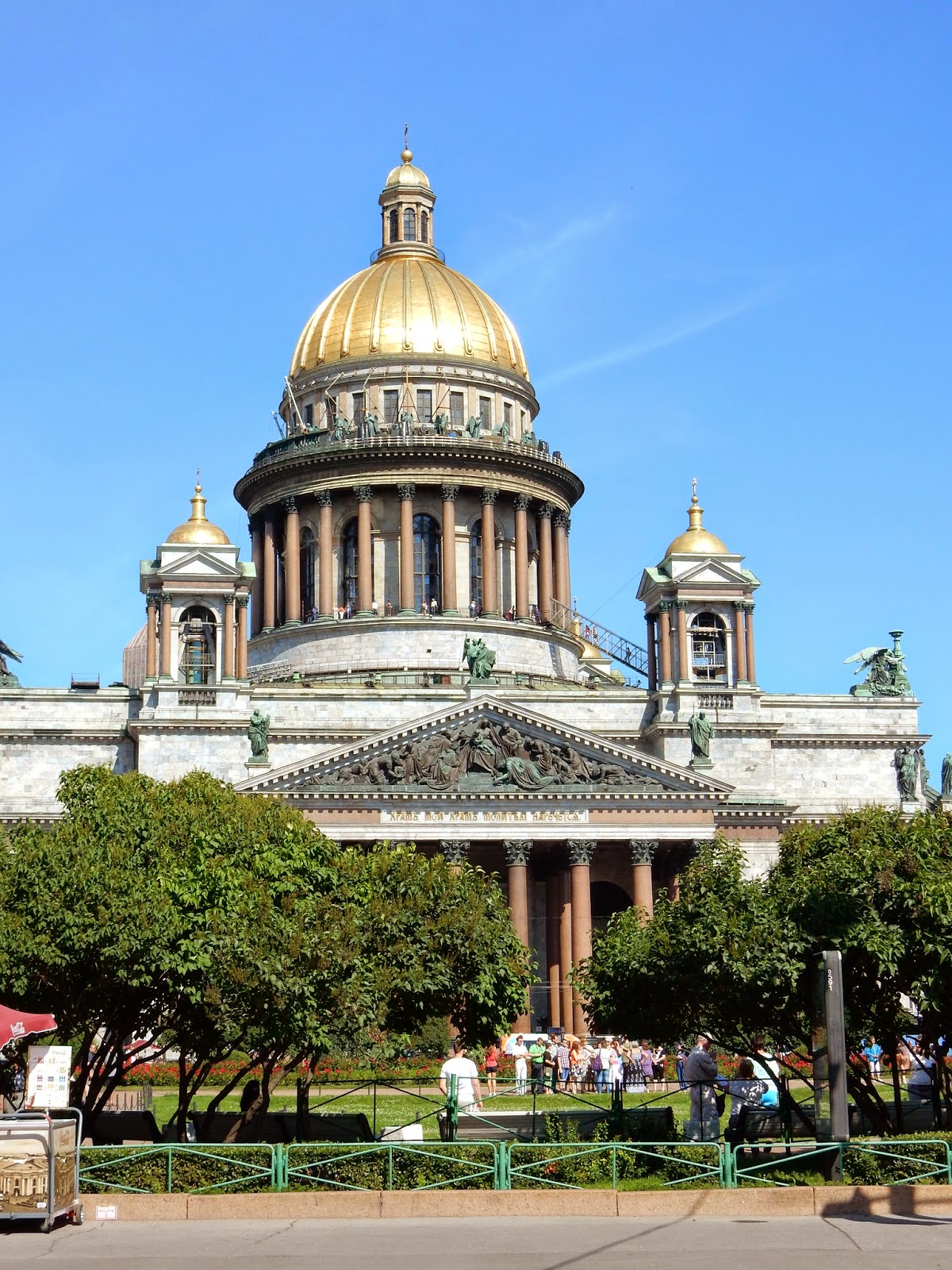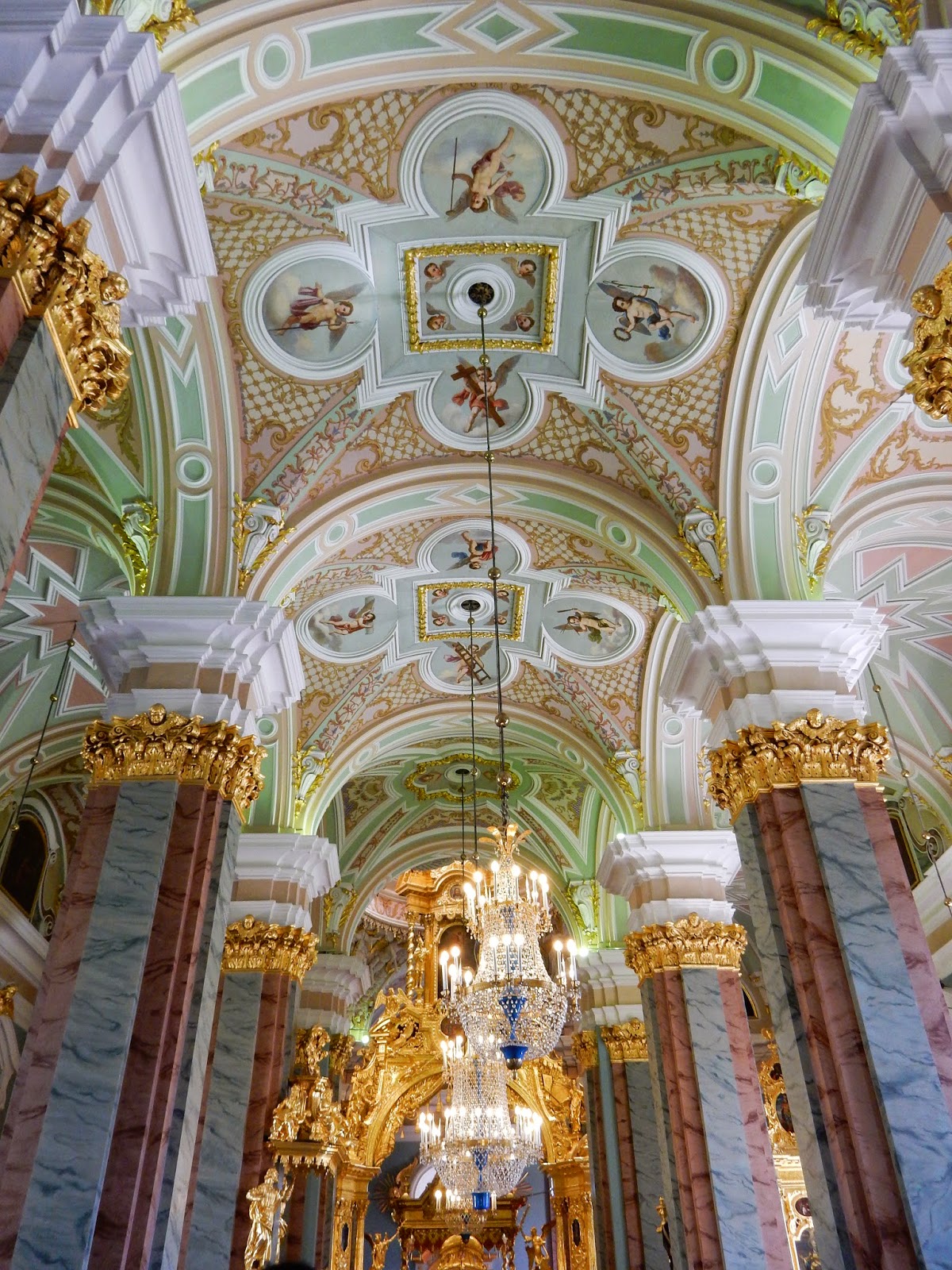St.
Petersburg, Russia
July
15-19, 2014
A long
day of traveling by motor coach from Tallinn to St. Petersburg, but
we stopped along the way and the scenery was lovely. Crossing the
border into Russia was a bit of an experience...a well-guarded
check-point, no photos, and certainly no political discussions inside
the bus as security came on board. Once we passed inspection and
drove through, the reality of being in this country was felt by all
of us...a country whose political relationship with the USA is
stressed and suspicious and whose military presence in the Ukraine is
unlawful. Little did we know that within a couple of days, a
pro-Russian separatist group would be responsible for the shooting
down of MH17 and conditions would continue to worsen in the Ukraine.
My Russian tour guide, a well-educated and interesting woman, was in
complete denial of any culpability on the part of Russia in either
situation when I questioned her a few days later. As Mr. Putin
controls the media, the population believes (for the most part) what
he wants to tell them...which is why his approval rating is hovering
at 84%. (I did read just a few minutes that this number is a slight
decrease from earlier in the summer.) My experience in Russia was
eye-opening on many levels, historically, culturally, socially, and
politically and I gained an appreciation of a people whose lives have been controlled by many a despotic ruler (yes, there were some
benevolent ones) over the centuries.
Saint
Petersburg, Russia's second largest city and a very important port for the country, was founded by Czar (Tsar)
Peter the Great in May,1703 and for most of the time until 1918, it
was the imperial capital of Russia. Located on the Neva River at the
head of the Gulf of Finland on the Baltic Sea, its name has gone
through a series of changes (Petrograd and Leningrad), depending upon
who was in power. Grandiose
is an appropriate descriptor of this city...everywhere one looks
there is a marvel of architecture. (The sheer opulence and decadence,
however magnificent, of the czars' palaces make the Bolshevik
revolution understandable.) I've visited lots of castles and chateaux
during my travels, but Catherine's Palace, the Hermitage Museum, and
the Peterhof Grand Palace and Gardens were, without question,
extraordinarily and extravagantly beautiful to the utmost. St.
Petersburg is known as the “Cultural Capital” of Russia and it's
a reputation that its citizens are very proud of. Art, dance, and
music are part of the everyday experience and both locals and
tourists fill the theaters to capacity.
Our
hotel was on Nevsky Prospect, the main commercial street running
through the city and not far from one of the many bridges that span
the river. Shops and restaurants line the boulevard which is thronged
with people, vehicles are driven like racing cars, and the speeding
sound of motorcyles is continual. Energy is everywhere; this is a
city with a pulse that doesn't stop...the youth rush about, the young
couples stroll, the children play in the park, and, it being summer,
lots of ice cream is eaten! As I did in the Baltic countries, I
visited a local synagogue in St. Petersburg where I had an
opportunity to speak with a gentleman there about antisemitism in
Russia and being a part of the Jewish community in a country whose
history of religious persecution spans hundreds of year. My maternal
grandparents came from the Ukraine in the wave of immigration in the
early 1900's; massive pogroms in the late 19th and early
20th centuries made it dangerous for Jews to live anywhere
in the region and they, like thousands, came to the United States in
search of freedom and an opportunity to live peacefully. The current
unrest in the Ukraine made it impossible to visit there so I was even
more determined to continue my visit of synagogues in Russia, not as
a substitute, but a chance to get as close as I could to my Russian
heritage.










































No comments:
Post a Comment